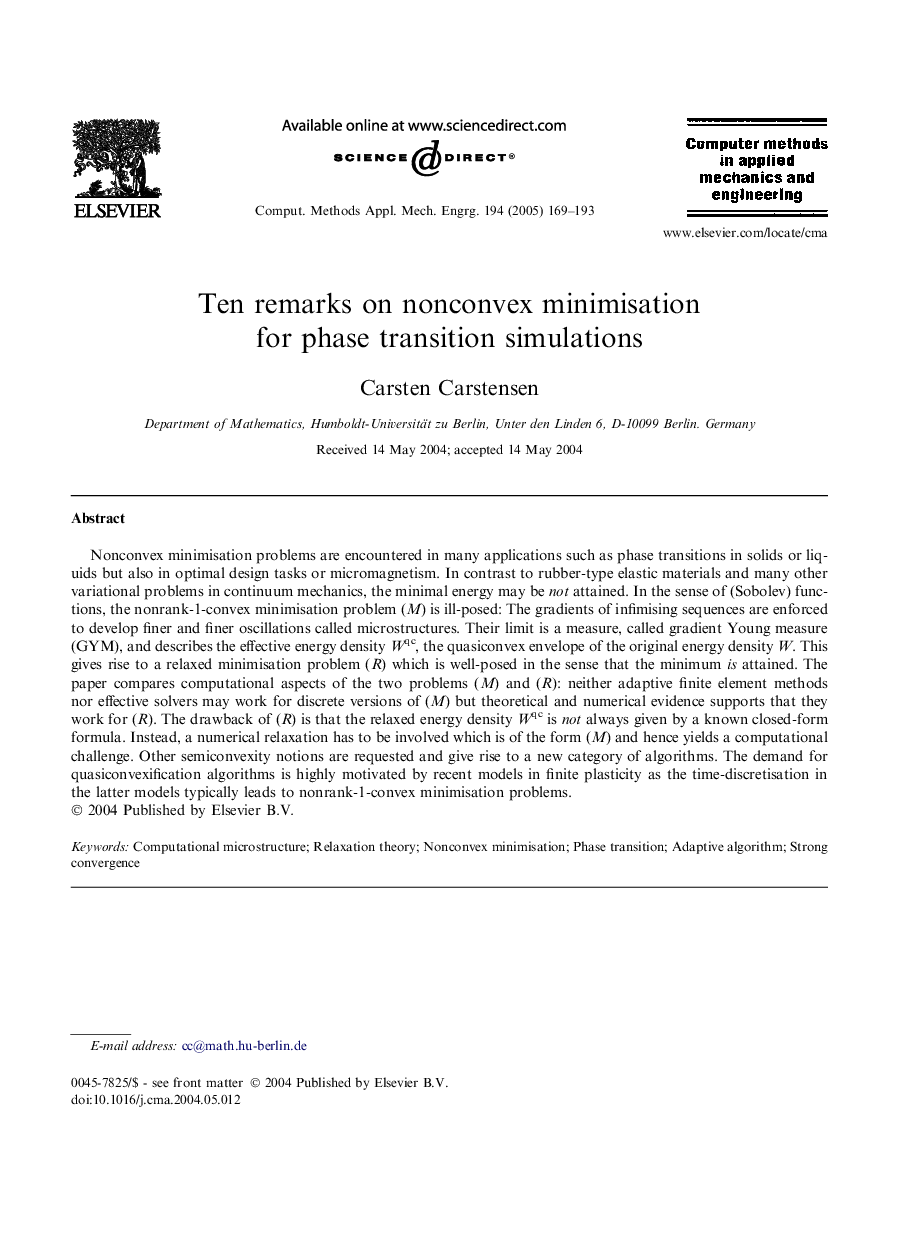| Article ID | Journal | Published Year | Pages | File Type |
|---|---|---|---|---|
| 9667151 | Computer Methods in Applied Mechanics and Engineering | 2005 | 25 Pages |
Abstract
Nonconvex minimisation problems are encountered in many applications such as phase transitions in solids or liquids but also in optimal design tasks or micromagnetism. In contrast to rubber-type elastic materials and many other variational problems in continuum mechanics, the minimal energy may be not attained. In the sense of (Sobolev) functions, the nonrank-1-convex minimisation problem (M) is ill-posed: The gradients of infimising sequences are enforced to develop finer and finer oscillations called microstructures. Their limit is a measure, called gradient Young measure (GYM), and describes the effective energy density Wqc, the quasiconvex envelope of the original energy density W. This gives rise to a relaxed minimisation problem (R) which is well-posed in the sense that the minimum is attained. The paper compares computational aspects of the two problems (M) and (R): neither adaptive finite element methods nor effective solvers may work for discrete versions of (M) but theoretical and numerical evidence supports that they work for (R). The drawback of (R) is that the relaxed energy density Wqc is not always given by a known closed-form formula. Instead, a numerical relaxation has to be involved which is of the form (M) and hence yields a computational challenge. Other semiconvexity notions are requested and give rise to a new category of algorithms. The demand for quasiconvexification algorithms is highly motivated by recent models in finite plasticity as the time-discretisation in the latter models typically leads to nonrank-1-convex minimisation problems.
Related Topics
Physical Sciences and Engineering
Computer Science
Computer Science Applications
Authors
Carsten Carstensen,
